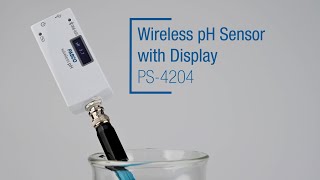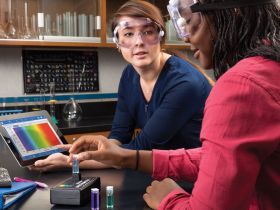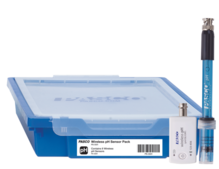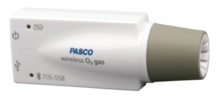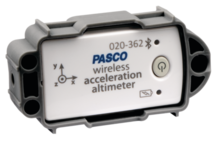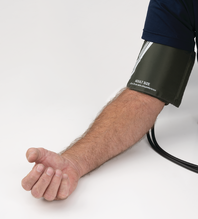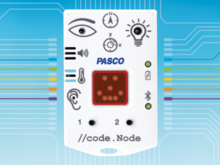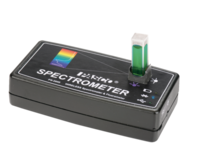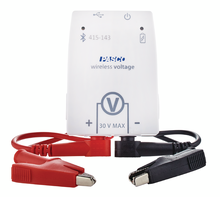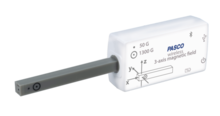
Bright OLED display allows students to directly read or digitally collect and graph pH as easilty.
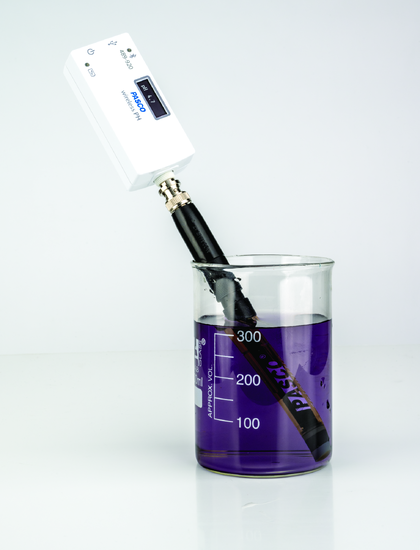
Wireless collection box allows any of PASCO ISE's to be reported in mV or in Log [Ion] concentrations.
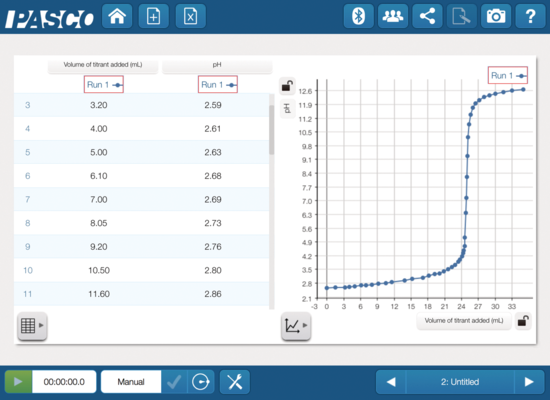
Collect data during experiments to do analysis and see trends along the reaction pathway.
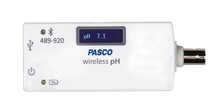
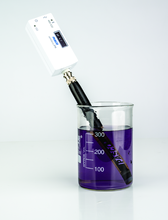
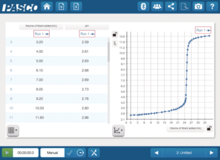
Our best tool for measuring pH since litmus paper, now with a digital display for instant readings! Manually record data using the display, or wirelessly transmit pH values to a device to graph and analyze using software.
- 1x 300 mAh Li ion rechargeable battery.
- 1x Direct-connect BNC pH probe
- 1x Probe storage bottle and solution
Product Summary
The Wireless pH Sensor with Display is a must-have for any chemistry, biology, or environmental science course. Equally capable in the lab or field, the sensor eliminates the hassle of cables, reducing spills and improving safety. With a lithium ion battery, the device can be utilized for years of normal class use. It can transmit data in real time, or store data over a period of days when continuous monitoring is required. The bright organic light-emitting diode (OLED) display allows students to immediately investigate solution properties with or without a computer interface. The Wireless pH Sensor enhances countless activities, including acid-base titrations, investigations into household chemicals, analyses of chemical reactions, water quality studies, and much more.
The Wireless pH Sensor uses a BNC connector to attach the pH probe. This amplifier can be used with other probes as well, such as the ORP, Flat pH, and ISE electrodes. Please see the buying guide for a full list of compatible accessories.
Features
- Simply charge, pair and go, no cables or interfaces to manage
- Compatible with ion-selective electrodes (ISE) and the oxidation reduction probe (ORP)
- Bluetooth® connectivity and a long-lasting rechargeable Li ion battery
- Logs pH data directly onto the sensor for long-term experiments
- Brightly displays pH values on OLED display
- Wirelessly connects to SPARKvue and Capstone for intuitive analysis and lab reports
What's Included
- 1x 300 mAh Li ion rechargeable battery.
- 1x Direct-connect BNC pH probe
- 1x Probe storage bottle and solution
Product Specifications
| Auto shut off | 1 hour |
| Approximate Mass | 76 g (with probe) 46 (without probe) |
| pH Range | 0 to 14 pH |
| Resolution | 0.02 pH |
| Accuracy | ±0.1 pH with calibration |
| Temperature Range | 5°C to 60°C |
| Connectivity | Bluetooth 5.2 |
| Logging | Yes |
| Battery | Rechargeable Li Ion |
| Water resistant | IPX3 (splashes) |
Battery & Logging
| Stored Data Points Memory (Logging) 1 | >55,000 |
| Battery - Connected (Data Collection Mode) 2 | |
| Battery - Logging (Data Logging Mode) 3 | |
| Battery Type | 300 mAh Lithium ion rechargeable |
1 Minimum # of data points with all measurements enabled, actual results depend on enabled measurements.
2 Continuous use in a connected state until battery failure, actual results will depend on sample rate, active measurements, and battery condition.
3 Logging until battery failure, actual results will depend on sample rate, active measurements, and battery condition.
* Normal classroom use is the sensor in active use for 20min/lab for 120 lab periods/yr.
Data Collection Software
This product requires PASCO software for data collection and analysis. We recommend the following option(s). For more information on which is right for your classroom, see our Software Comparison: SPARKvue vs. Capstone »
Product Guides & Articles
Incorporating Technology in Chemistry Labs
Meet the digital age head-on. Modern tech transforms how students interact with molecules and reactions. Chemistry learners connect theory with practice in ways that were once sci-fi fantasy. This piece dives deep into this high-tech educational revolution—you'll get insights on everything from interactive learning environments to staying ahead of the curve as technology evolves.
Chemical Equilibrium Explained
Chemical equilibrium is the key to understanding how reactions behave in various situations. In essence, a reaction reaches a chemical equilibrium when the forward and reverse reactions occur at the same rate, resulting in no net change in the concentrations of reactants and products.
Experiment Library
Perform the following experiments and more with the Wireless pH Sensor with Display.
Visit PASCO's Experiment Library to view more activities.
Membrane Permeability (pH sensor)
Students use a pH sensor to explore which substances can and cannot pass through a cell membrane model.
Titration of an Unknown Acid
Students use a pH sensor to conduct a strong acid and weak acid titration with a strong base.
Investigation of Acid-Base Titrations
Students compare the pH titration profiles of strong, weak and polyprotic acids.
Acid Rain
Students use a pH sensor to measure the impact atmospheric pollutants have on rainfall and plant growth.
Ocean Acidification
Students use a pH sensor to explore the effect of excess atmospheric carbon dioxide on water pH.
Titration Curves
Students will use a pH Sensor and a Drop Counter to explore the shape of a titration curve produced by the titration of a strong acid and a weak acid by a strong base.
Soil pH
Students use a pH sensor to investigate how local soil quality may impact the ability to support agricultural crops.
pH of Household Chemicals
Students will use a pH sensor to determine the pH of common household substances.
Diffusion
Students use a pH sensor to investigate the diffusion of hydrogen ions through a semipermeable membrane, comparing the rates of diffusion for two solutions that differ in their acidity.
Evaluation of Lemonade as a Buffer
Students use a powdered commercial lemonade formulation as a model for buffers and test its capacity to resist pH changes.
Support Documents
| Manuals | ||
|---|---|---|
| Wireless pH Sensor with OLED Display Manual | English - 403.26 KB | |
| Knowledge Base | ||
| Battery Replacement Matrix | Feb 7th, 2025 | |
| How do I troubleshoot connecting a wireless sensor? | Dec 13th, 2024 | |
| Windows asks for a PIN number when connecting wireless sensor or device | Feb 5th, 2025 | |
| Android asks for a PIN number to pair a wireless device to system | Aug 29th, 2023 | |
| Emergency calibration standards for pH sensors | Apr 14th, 2022 | |
| Managing cap for soaker bottles | Mar 1st, 2024 | |
| Setting OLED sensors to SI units only | Jul 8th, 2024 | |


